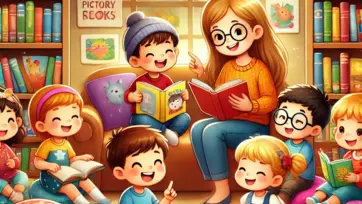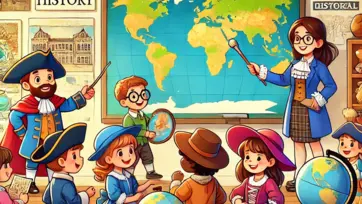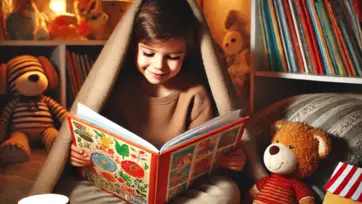In today’s digital world, screens are an unavoidable part of children’s lives. From educational apps to entertaining videos, technology plays a significant role in how kids learn and interact with the world. However, excessive screen time can lead to negative effects, such as reduced physical activity, sleep disturbances, and decreased face-to-face social interactions. Finding the right balance between educational screen time and entertainment is essential for healthy child development. This article explores strategies for parents and caregivers to ensure kids use screens in a productive, balanced way.
Understanding the Impact of Screen Time
Screen time is not inherently bad. It depends on the content and the amount of time spent. Educational screen time, such as interactive learning apps, documentaries, and digital reading, can be beneficial for children’s cognitive and social development. On the other hand, excessive entertainment-based screen time, such as gaming or watching videos, can contribute to addiction, reduced attention span, and inactivity.
According to the American Academy of Pediatrics (AAP), the recommended screen time for children is as follows:
- Under 18 months: Avoid screen time except for video calls.
- 18-24 months: Limited screen time with high-quality, educational content.
- 2-5 years: One hour per day of supervised, quality programming.
- 6 years and older: Consistent limits on screen time to ensure it does not interfere with sleep, physical activity, or real-world interactions.
By understanding these recommendations, parents can set appropriate boundaries and make screen time a positive experience.
Educational Screen Time: Turning Screens into Learning Tools
Instead of banning screens entirely, parents can encourage the use of digital devices for educational purposes. Here are some ways to make screen time productive:
1. Use High-Quality Educational Apps and Websites
There are countless apps and websites that help children learn subjects such as math, science, language, and art. Some of the best educational platforms include:
- Khan Academy Kids – Offers interactive lessons in various subjects.
- ABCmouse – Provides engaging learning paths for younger children.
- National Geographic Kids – Teaches science and geography through videos and games.
- Duolingo – Helps children learn new languages in a fun way.
2. Encourage Interactive and Creative Activities
Passive screen time, like watching cartoons for hours, can be less beneficial than interactive screen time. Apps that encourage creativity, such as coding games, digital storytelling, and drawing programs, can be a great way to engage kids. For example:
- ScratchJr – Introduces kids to coding through simple animations.
- Tynker – Helps children develop programming skills.
- Toontastic 3D – Encourages kids to create their own animated stories.
3. Make Learning a Family Activity
Parents can participate in their child’s screen time to make it more meaningful. Watching educational videos together, discussing documentaries, or playing learning-based games as a family can enhance the experience. This also allows parents to monitor content and ensure kids are engaging in appropriate digital activities.
Entertainment Screen Time: Setting Healthy Limits
Entertainment-based screen time, such as watching cartoons, playing video games, or scrolling through social media, is not necessarily harmful but should be moderated. Here’s how to set healthy limits:
1. Establish Screen Time Rules
Setting clear guidelines helps children develop healthy habits. Some examples of screen time rules include:
- No screens during meals or family gatherings.
- A set daily limit for recreational screen time (e.g., one hour per day).
- No screens an hour before bedtime to improve sleep quality.
Using tools like parental control settings or screen timers can help reinforce these rules.
2. Promote a Balance of Activities
Children should engage in other activities that promote their physical and mental well-being. Encourage:
- Outdoor play – Activities like biking, sports, or playing in the park.
- Hands-on learning – Art, puzzles, board games, and building activities.
- Reading – Developing a habit of reading books instead of only consuming digital content.
By offering a variety of engaging activities, children will be less likely to rely on screens for entertainment.
3. Model Healthy Screen Habits
Children learn by observing adults. If parents are glued to their phones or watching TV excessively, kids will follow their example. Setting boundaries for personal screen use and engaging in offline activities as a family can encourage healthier habits.
Creating a Screen Time Schedule
A well-structured daily schedule can help maintain a balance between educational and entertainment screen time. Below is an example of a balanced routine for children:
Morning:
- 30 minutes of educational screen time (learning apps, documentaries)
- Outdoor activity or exercise
- Schoolwork or homework
Afternoon:
- Creative play (drawing, puzzles, or storytelling)
- Limited entertainment screen time (e.g., 30-45 minutes of a favorite show or game)
- Reading time
Evening:
- Family activities (board games, discussions, or storytelling)
- No screens before bedtime to ensure good sleep quality
By incorporating educational and entertainment screen time in a balanced way, children can enjoy the benefits of technology without it becoming overwhelming.
Conclusion
Screen time can be a valuable tool for education and entertainment when managed effectively. The key is moderation and ensuring that digital content aligns with a child’s developmental needs. By setting clear rules, promoting offline activities, and leading by example, parents can create a healthy digital environment for their kids. With the right approach, screen time can enhance learning while still allowing children to enjoy their favorite forms of entertainment responsibly.
Finding balance is essential—technology should be a tool for growth, not a replacement for real-life experiences.








